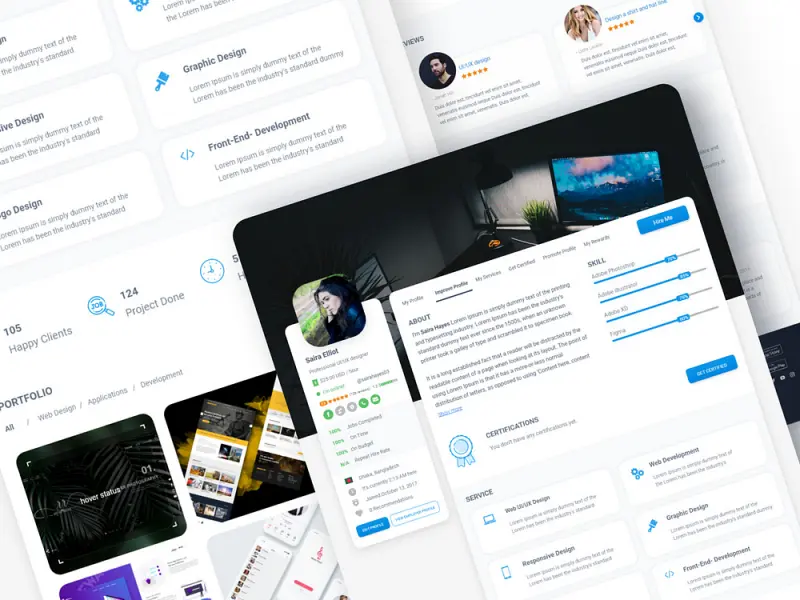Many people misunderstand the difference between outsourcing and offshoring. These terms are often confused, but they are distinct concepts.
Consumers frequently use business terms without clear differentiation. They often view both terms negatively as part of a corporate effort to harm smaller entities. Many don’t understand outsourcing and offshoring difference.
This misunderstanding is unfortunate because knowing the difference can deepen our understanding of business. It helps us appreciate the pros and cons of these activities beyond political rhetoric. So, what’s the difference between outsourcing vs offshoring? Let’s find out.
I. Understanding Outsourcing
Outsourcing means giving work to people or groups outside your company. This can help you save money, complete tasks quicker, and increase your earnings.
This lets you concentrate on your primary and core business functions. Companies often outsource to get extra help during busy times or staffing shortages.

II. Understanding Offshoring
Offshoring means moving some of your business activities to another country. Instead of doing everything in your home country, you can have certain tasks or operations done abroad.
Companies often offshore to benefit from lower costs, a large labor pool, and different time zones. This can help establish a business presence in another country and access specialized skills.
Offshoring can also allow your business to operate 24/7 across various time zones. A common example is offshoring customer support, such as call centers in Vietnam that serve international clients.
Bonus: Offshore Outsourcing
Offshore outsourcing is a specific type in which the external organization performing the business functions or services is located in a different country.
Learn More On:
III. The Difference Between Outsourcing and Offshoring
It’s time for the detailed table for the differences between outsourcing vs offshoring:
| Aspect | Offshoring | Outsourcing |
|---|---|---|
| Location | Typically, it involves moving operations to a different country. | Can be within the same country or internationally. |
| Cost Savings | Cost savings are achieved primarily through lower labor costs in offshore locations. | Achieves cost savings through economies of scale and specialization of the third-party provider. |
| Control | Greater control over the operations as the company often sets up its own facilities. | Less control as the third-party provider manages the operations. |
| Quality Management | Direct oversight can help maintain quality, but cultural and communication barriers can pose challenges. | Quality depends on the third-party provider’s standards and practices. |
| Flexibility | Flexibility to scale operations based on the company’s needs. | Flexibility depends on the terms of the contract with the third-party provider. |
| Risk | Higher risks are associated with the political and economic instability of the offshore country. | Risk is shared with the third-party provider, but dependency on the provider can be a concern. |
| Data Security | Increased risk of data breaches and compliance issues with international laws. | Data security depends on the provider’s protocols and compliance with relevant laws. |
| Cultural Barriers | Potential cultural and language barriers can affect communication and integration. | Similar cultural and language barriers if outsourced internationally; fewer issues if domestic. |
| Startup Time and Costs | Higher initial costs and time required to set up operations and train employees. | Lower initial costs as the provider already has established processes and trained staff. |
| Focus on Core Business | Allows the company to focus on core activities by offloading non-core functions. | Similar benefit, as the third-party handles non-core functions, allowing focus on core business. |
| Scalability and Growth | Easier to scale operations globally and enter new markets. | Scalability depends on the provider’s capacity and flexibility. |
| Impact on Domestic Employment | Can lead to job losses in the home country, affecting public perception negatively. | Can also lead to job losses, but the impact varies based on whether outsourcing is domestic or international. |
| Economic Incentives | Often, it benefits from tax breaks and incentives provided by the offshore country. | Economic incentives depend on the contract and the provider’s location. |
| Example Industries | Manufacturing, IT services, customer support, R&D. | IT services, HR functions, payroll, customer support, and logistics. |
IV. Choosing Between Outsourcing and Offshoring
When scaling your business, deciding between outsourcing and offshoring is vital. Each strategy has benefits; understanding key factors can help you choose wisely.
Here are important considerations when evaluating outsourcing vs offshoring:
1. Costs
Evaluate the financial impact of each option. Both can lower expenses if managed well.
Outsourcing saves costs by using external resources for hiring and training. Outsourcing firms have a pool of experts ready to join your team, offering flexibility to scale as needed.
Offshoring leverages lower labor costs in other countries, including wages, taxes, infrastructure expenses, and currency exchange rates.
Additionally, offshore outsourcing provides access to skilled workers in countries with lower labor costs.

2. Assessing Quality of Work
Assess prospective outsourcing partners or offshore destinations’ qualifications, history, and standing.
In outsourcing, the quality of work depends on the service provider’s skills and reputation. To choose the right outsourcing company, look for references, case studies, and customer reviews.
For offshoring, consider the specialized expertise of different countries. For example, India is known for software development, while China excels in manufacturing. Keep in mind that work practices, norms, and standards in the country can add complexity.
3. Managing Time Zone Differences
Time zone differences can affect communication and efficiency when working with remote teams. Offshoring or outsourcing to a location with a significant time difference can enable 24/7 operations.
However, you must coordinate and schedule work hours carefully to ensure smooth collaboration. Establish explicit rules and expectations for asynchronous communication and task completion.
Have a Project Idea in Mind?
Get in touch with experts for a free consultation. We’ll help you decide on next steps, explain how the development process is organized, and provide you with a free project estimate.
4. Addressing Cultural Differences and Language Barriers
Outsourcing or offshoring involves working with people from different cultures and dealing with language barriers. If not handled well, these can cause misinterpretations and inefficiencies.
To minimize these issues, ensure the remote team has adequate language skills to communicate effectively and understand your requirements and expectations.
5. Evaluating Political and Economic Climate
Unstable political or economic conditions can risk your business operations. Research and assess the country’s political stability and economic trends you are considering. Also, review legal frameworks, intellectual property protection, contractual obligations, and currency fluctuations to determine if investing there is worthwhile.
V. Why Choose TECHVIFY for Outsourcing Services?
Choosing the right outsourcing partner is crucial for the success of your business. Here’s why TECHVIFY stands out as one of the best outsourcing companies in Vietnam:
- Expertise and Experience: TECHVIFY has a proven track record in delivering high-quality IT services. Our vast experience guarantees that we can manage complex projects with ease, providing you with reliable and efficient solutions.
- Skilled Workforce: Our team comprises exceptionally skilled professionals adept in the latest technologies and methodologies. This expertise allows us to deliver top-notch services that meet your specific needs.
- Cost-Effective Solutions: We understand the importance of cost-efficiency. TECHVIFY offers competitive pricing without compromising quality, helping you achieve maximum ROI.
- Customized Services: Every business is unique, and we tailor our services to align with your specific goals and requirements. This personalized approach ensures that you get the most out of our partnership.
- Strong Communication: Effective communication is key to successful outsourcing. Our team is fluent in English and familiar with global business practices, ensuring smooth and efficient collaboration.
- Commitment to Quality: We adhere to international standards and best practices in all our projects, guaranteeing you receive high-quality services that drive your business forward.
With TECHVIFY, you can trust that your outsourcing needs are in expert hands. Partner with us to leverage our expertise, reduce costs, and focus on what you do best—growing your business.
Conclusion
Understanding the differences between offshoring and outsourcing is key to making smart business decisions. While these terms are often confused, they each have their own set of advantages and challenges.
When considering scaling your business, it’s important to weigh these factors carefully. Consider costs, quality of work, time zone differences, and even cultural nuances to decide: outsourcing vs offshoring, which strategy works best for you.
If you’re looking to streamline your operations and boost efficiency, TECHVIFY offers top-notch outsourcing services tailored to your needs. We’re here to help you navigate these decisions and find the best solutions for your business. Feel free to reach out and see how we can support your growth.
TECHVIFY – Global AI & Software Solutions Company
For MVPs and Market Leaders: TECHVIFY prioritizes results, not just deliverables. Reduce time to market & see ROI early with high-performing Teams & Software Solutions.
- Email: [email protected]
- Phone: (+84)24.77762.666





